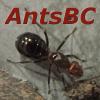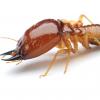Okay so I need help identifying two species of ants that I caught, I'm almost positive the big one is a Harvester species which I caught in May. She currently has two workers running around and a third about to eclose with many more coming. The queen is about 7mm long and the workers are about 5mm long. The other one I'm a lot more interested in what exactly it is. I caught her some time in June just before a decent shower, these girls seem to love to fly just before and after every rain storm and ever since I've started keeping ants I see TONS of these queens flying all around my office. The queen is about 3ish mm long and the worker she currently has is about 1-1 1/2mm long. I'm sorry but my phone's camera is a bit crappy but hopefully these pictures are good enough to help ID them!
Side note: these are the best pictures I could take of them since they're already in the test tubes and I can't disturb them much, thankfully the color on the picture is almost exactly the same color that they are in real life. I'm not too good at the distinguishing features that they have but hopefully everything needed is posted, if more is absolutely needed I'd be happy to find out




Edited by OgienChomik, August 3 2018 - 2:09 PM.

















